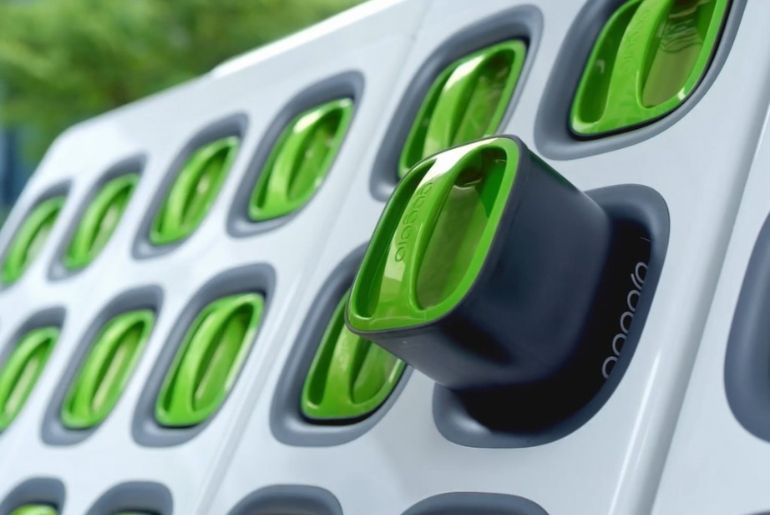As India accelerates its shift towards electric vehicles, battery swapping and plug-in charging have become more controversial. Both systems are tackling the barriers to EV adoption, but they have different scalability, user experience and infrastructure implications. As policy models continue to evolve and key players in the industry like SUN Mobility, RACE Energy, and Bounce Infinity are advancing in 2025, it is timely to look at the current landscape and future outlook of these two charging models.
Types of two models:
Plug-in charging: This traditional method consists of connecting a cable from the EV to a charging station. Charging times can range from several hours for level 1 and Level 2 chargers to less than an hour for DC fast chargers, depending on the charging station’s maximum power output.
Swappable Charging: In this model, Electric Vehicle (EV) owners swap their depleted battery with a fully charged battery at a battery swapping station. Replacement of a depleted battery varies between conventional fuels and electric vehicle batteries, but is always a matter of minutes. Leaving the battery charging in place of a low battery is similar to fuelling up your conventional vehicle.
Policy Landscape: Draft Battery Swapping Policy by NITI Aayog (2025)
In 2025, NITI Aayog published a draft policy to promote and standardise battery swapping after recognising the potential roles for this mode of operation in EV deployment and support.
Key points to bear in mind are:
Incentivisation: Besides the incentivisation provided on plug-in EVs, incentivisation on the demand side on EVs featuring swappable batteries is suggested under the draft policy.
Battery needs: For assuring safety as well as online monitoring, current IOT-supported battery monitoring systems should be spelled out by the draft rule. Swappable batteries also need compliance with safety requirements like AIS 156 and AIS 038 Rev 2.
Interoperability: To enable flexible use across EVs, the strategy recommends having defined battery interfaces.
Infrastructure Development: The first deployment of battery swapping networks will be focused on urban areas of over 4 million residents.
Unique Identification: A Unique Identification Number (UIN) will be issued to every replaceable battery and switching station to track and monitor them.
Top Battery Switching Firms in the Industry:
SUN Mobility: By 2030, SUN Mobility, a reputed battery switching firm, along with IndianOil, plans to get more than 10,000 switching stations deployed across more than 40 cities. By 2025, they expect that they will have more than 650 stations, performing more than 60,000 transfers daily. Since the BaaS (battery-as-a-service) model decouples battery ownership from the vehicle, it reduces upfront investment for the customer.
RACE Energy: RACE Energy is promoting integrated EV solutions that not only include vehicles but also infrastructure for exchanges. RACE Energy specializes in electric three-wheelers with in-house technology to support urban logistics and transportation with effective battery management and fast-swapping.
Bounce Infinity: Bounce Infinity began as a scooter rental business but then pivoted to produce electric scooters with “swappable batteries”. They hope to deploy 30,000 scooters in select markets, with SUN Mobility as their partner. Bounce Infinity plans to utilize the existing battery swapping infrastructure to provide an uninterrupted customer experience.
Obstacles Ahead:
Standardisation: One of the main challenges that still face EV manufacturers and models is interoperability.
Capital intensive: You need a lot of money to set up multiple switching stations and to maintain a battery supply.
Policy implementation: While the draft policy has a structure in place, the industry must adopt and implement as designed.
Infrastructure Gap: Many areas, particularly rural ones, do not have enough infrastructure for charging.
Infrastructure Stress: The electrical infrastructure may be under stress as EV adoption increases due to enhancements like smart charging.
Charging Duration: Longer charge times may be less convenient for users, particularly in a commercial environment.
The Road Ahead
Both battery swapping systems and plug-in charging workflows are suitable for India’s EV ecosystem. Battery swapping systems – with the speed of turnarounds and operational efficiencies they provide – suggest a clear utility in commercial fleets, urban mobility modes and two- and three-wheelers. Private vehicle owners and long-haul Drivers will particularly benefit from plug-in charging systems.
The success of these two models depends critically on the engagement of policymakers, industry stakeholders, and consumers. Mais, two preconditions must be met in order to cultivate a truly sustainable and efficient EV charging ecosystem in India: first, the infrastructure must be constructed and standardised; second, consumers need to be educated.

